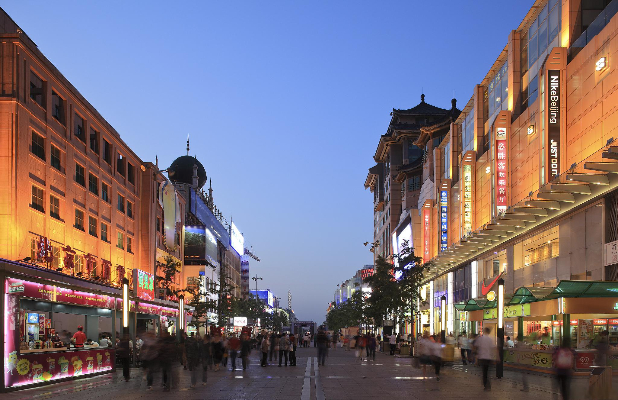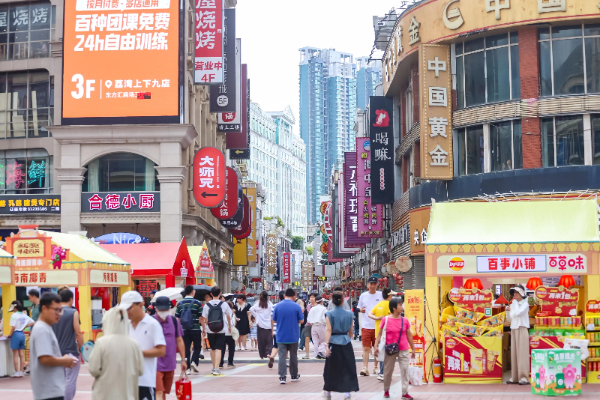China Migration Patterns: Key Trends Shaping the Future of Chinese Demographics
China, the most populous country in the world, is experiencing significant demographic shifts that are reshaping its future. These changes are driven by various factors, including urbanization, the aging population, changing employment patterns, and government policies. Migration patterns in China have long been a topic of interest for sociologists, economists, and policymakers. As the country continues to evolve, understanding these migration trends is crucial for anticipating how China’s demographic landscape will look in the coming decades.
In this article, we will explore the key trends shaping migration in China, focusing on both internal and international migration, the impact of the one-child policy, and the future demographic challenges the country may face.

1. Urbanization: The Rise of Mega Cities
Urbanization has been one of the most significant trends in China over the past few decades. More than 60% of China’s population now lives in urban areas, compared to just 26% in 1980. This shift has been driven by the economic boom, which has created job opportunities in cities, as well as government policies encouraging rural-to-urban migration.
Mega cities like Beijing, Shanghai, and Shenzhen have become magnets for people seeking better economic opportunities. The Chinese government’s efforts to modernize the economy, particularly in the manufacturing and technology sectors, have led to an influx of young professionals and skilled workers into these urban centers. These cities not only provide more job opportunities but also better access to education, healthcare, and social services.
However, rapid urbanization has also led to challenges such as overcrowding, pollution, and an increased cost of living. While cities continue to expand, the pressure on infrastructure and public services remains high. To manage this growth, the government has implemented policies to balance development across different regions, focusing on smaller cities and rural revitalization projects.
2. Migration Within China: The Hukou System
China’s internal migration is heavily influenced by the country’s household registration system, known as the hukou system. This system divides people into two categories: rural and urban residents. The hukou system restricts the movement of rural citizens to urban areas unless they obtain permission. It has historically limited access to social services for migrant workers, making it difficult for rural residents to settle in cities permanently.
In recent years, however, there has been a gradual loosening of these restrictions, particularly in smaller cities. As a result, millions of migrant workers, particularly those from rural areas, have moved to urban centers to find work. The majority of these migrants work in manufacturing, construction, and service industries. Despite the challenges of urban life, many rural residents continue to migrate to cities in search of better opportunities, even if they cannot fully integrate into urban society.
The government has been working to address these disparities, making efforts to offer social welfare benefits to rural migrants in urban areas and promote rural development to create local jobs. These changes could significantly impact the future of China’s internal migration trends.
3. The Aging Population: Implications for Migration
One of the most pressing demographic challenges in China is its rapidly aging population. Due to the one-child policy, which was implemented from 1979 to 2015, China now faces a significant demographic shift. The working-age population is shrinking, and the number of elderly people is increasing. According to estimates, by 2050, nearly one-third of China’s population will be over the age of 60.
This demographic trend is already having a profound effect on migration patterns. Many younger people are migrating to cities for work, leaving rural areas with a high proportion of elderly residents. This has led to concerns about how rural areas will be able to care for their aging populations. In response, the government has started to encourage young people to return to their hometowns to take care of elderly relatives, offering financial incentives and support for those willing to invest in local industries.
International migration also plays a role in addressing the aging population. Chinese nationals are increasingly seeking work abroad, particularly in countries with aging populations, such as Japan and South Korea. This international migration trend is helping China manage its domestic demographic challenges by allowing younger people to gain work experience and financial support for their families.
4. International Migration: Chinese Diaspora and the Global Workforce
China’s international migration patterns have become increasingly complex in recent years. As the Chinese economy has become more globalized, so too has the movement of Chinese people abroad. Today, millions of Chinese citizens live and work overseas, with significant Chinese communities in countries such as the United States, Canada, Australia, and parts of Europe.
This migration is driven by several factors, including education, employment opportunities, and the desire to escape the high cost of living in Chinese cities. Chinese students are increasingly pursuing higher education abroad, especially in the United States, the UK, and Australia. Many of these students eventually decide to stay and work abroad, contributing to the global workforce in industries such as technology, finance, and healthcare.
Moreover, many skilled workers and professionals are leaving China in search of better opportunities abroad, particularly in the fields of technology, engineering, and business. This has created a global Chinese diaspora that plays a critical role in both China’s economic development and its relations with other countries.
However, as China’s economy continues to grow, it is also creating more opportunities for highly skilled professionals to stay and work in the country. The government has introduced several initiatives aimed at attracting talented individuals back to China, such as offering incentives for overseas Chinese nationals to return home and contribute to innovation and development.
5. The One-Child Policy: Long-Term Effects on Migration Patterns
The one-child policy, which was in place from 1979 to 2015, has had lasting effects on China’s demographic structure. While the policy was officially abolished in 2015, its legacy continues to shape migration trends and the labor force.
The policy has led to a significant gender imbalance, with a higher number of male births than female births. This has contributed to challenges in marriage patterns and population growth. Additionally, the one-child policy has led to a smaller working-age population, as fewer children were born in the 1980s and 1990s.
These factors are influencing migration patterns in both urban and rural areas. In rural areas, the male population is particularly prominent, as many young men have migrated to cities for work, leaving behind aging parents and fewer women to care for them. In urban areas, there is a growing demand for services related to elderly care, which is attracting migrant workers, especially women, to fill these roles.
6. Future Challenges: Sustainability and Regional Disparities
As migration patterns continue to evolve, China faces a number of future challenges. One of the most significant is the sustainability of migration trends. While urban areas continue to attract a large proportion of the population, the pressure on infrastructure, housing, and public services is mounting. Many cities are struggling to cope with rapid population growth, particularly in areas such as Beijing, Shanghai, and Shenzhen.
To address this, the Chinese government is focusing on reducing regional disparities and promoting balanced development. Policies are being implemented to encourage migration to second- and third-tier cities, as well as rural areas, through incentives for businesses and individuals willing to invest in these regions.
Another challenge is the need to address the aging population and the decreasing workforce. The government has started to promote policies that encourage families to have more children, as well as efforts to bring in foreign workers to fill labor shortages.
Conclusion
China’s migration patterns are deeply intertwined with its broader demographic and economic trends. The country’s rapid urbanization, aging population, and changing migration policies are reshaping the landscape of both internal and international migration. While challenges remain, including regional disparities and the sustainability of migration patterns, China’s response to these issues will play a key role in shaping its demographic future.
F&Q (Frequently Asked Questions)
Q1: How does urbanization affect migration in China?
A1: Urbanization has led to an increase in rural-to-urban migration, as more people move to cities for better economic opportunities, education, and healthcare. However, rapid urbanization has also resulted in overcrowding and pressure on infrastructure.
Q2: What is the hukou system, and how does it affect migration?
A2: The hukou system is a household registration system that restricts rural residents from moving to urban areas without permission. While restrictions have loosened in recent years, it has historically limited access to social services for migrants.
Q3: How does China’s aging population impact migration trends?
A3: China’s aging population has led to a shrinking workforce and an increasing demand for elderly care, which is influencing migration patterns both domestically and internationally, as younger people move abroad for better job opportunities.
Q4: How does international migration play a role in China’s demographics?
A4: International migration allows China to send skilled workers abroad, while also attracting talent back through incentives. The growing Chinese diaspora is contributing to global economic development.
Q5: How is the one-child policy affecting migration patterns?
A5: The one-child policy has led to a gender imbalance and a smaller working-age population. This has affected marriage patterns, and migration trends, particularly in rural areas where there are fewer women to care for elderly parents.
Q6: What is China’s approach to balancing regional disparities in migration?
A6: China is promoting balanced development through incentives to move to second- and third-tier cities and rural areas. The government is also focused on reducing pressure on major cities by encouraging migration to less-developed regions.

